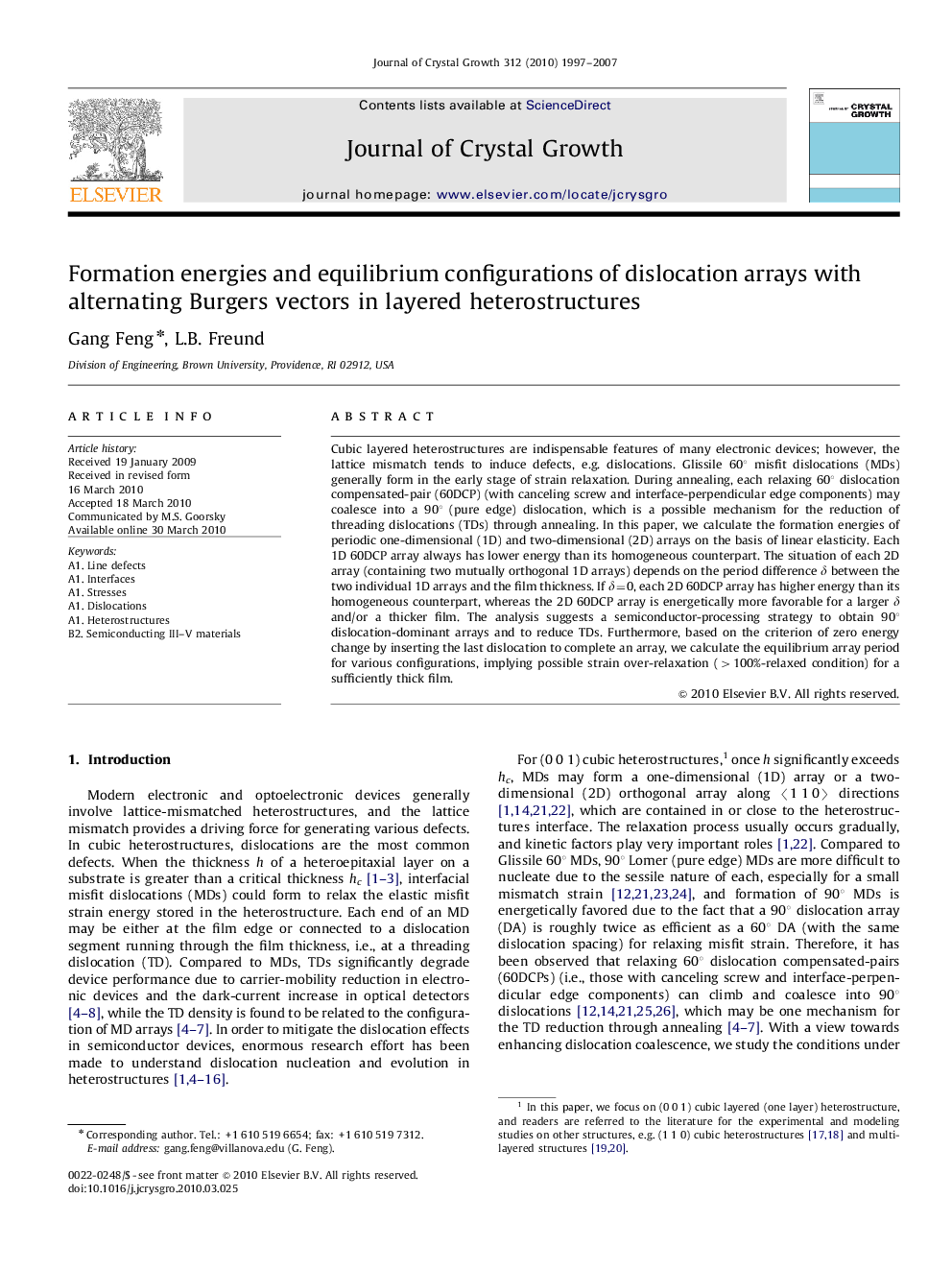| Article ID | Journal | Published Year | Pages | File Type |
|---|---|---|---|---|
| 1793108 | Journal of Crystal Growth | 2007 | 11 Pages |
Cubic layered heterostructures are indispensable features of many electronic devices; however, the lattice mismatch tends to induce defects, e.g. dislocations. Glissile 60° misfit dislocations (MDs) generally form in the early stage of strain relaxation. During annealing, each relaxing 60° dislocation compensated-pair (60DCP) (with canceling screw and interface-perpendicular edge components) may coalesce into a 90° (pure edge) dislocation, which is a possible mechanism for the reduction of threading dislocations (TDs) through annealing. In this paper, we calculate the formation energies of periodic one-dimensional (1D) and two-dimensional (2D) arrays on the basis of linear elasticity. Each 1D 60DCP array always has lower energy than its homogeneous counterpart. The situation of each 2D array (containing two mutually orthogonal 1D arrays) depends on the period difference δ between the two individual 1D arrays and the film thickness. If δ=0, each 2D 60DCP array has higher energy than its homogeneous counterpart, whereas the 2D 60DCP array is energetically more favorable for a larger δ and/or a thicker film. The analysis suggests a semiconductor-processing strategy to obtain 90° dislocation-dominant arrays and to reduce TDs. Furthermore, based on the criterion of zero energy change by inserting the last dislocation to complete an array, we calculate the equilibrium array period for various configurations, implying possible strain over-relaxation (>100%-relaxed condition) for a sufficiently thick film.
